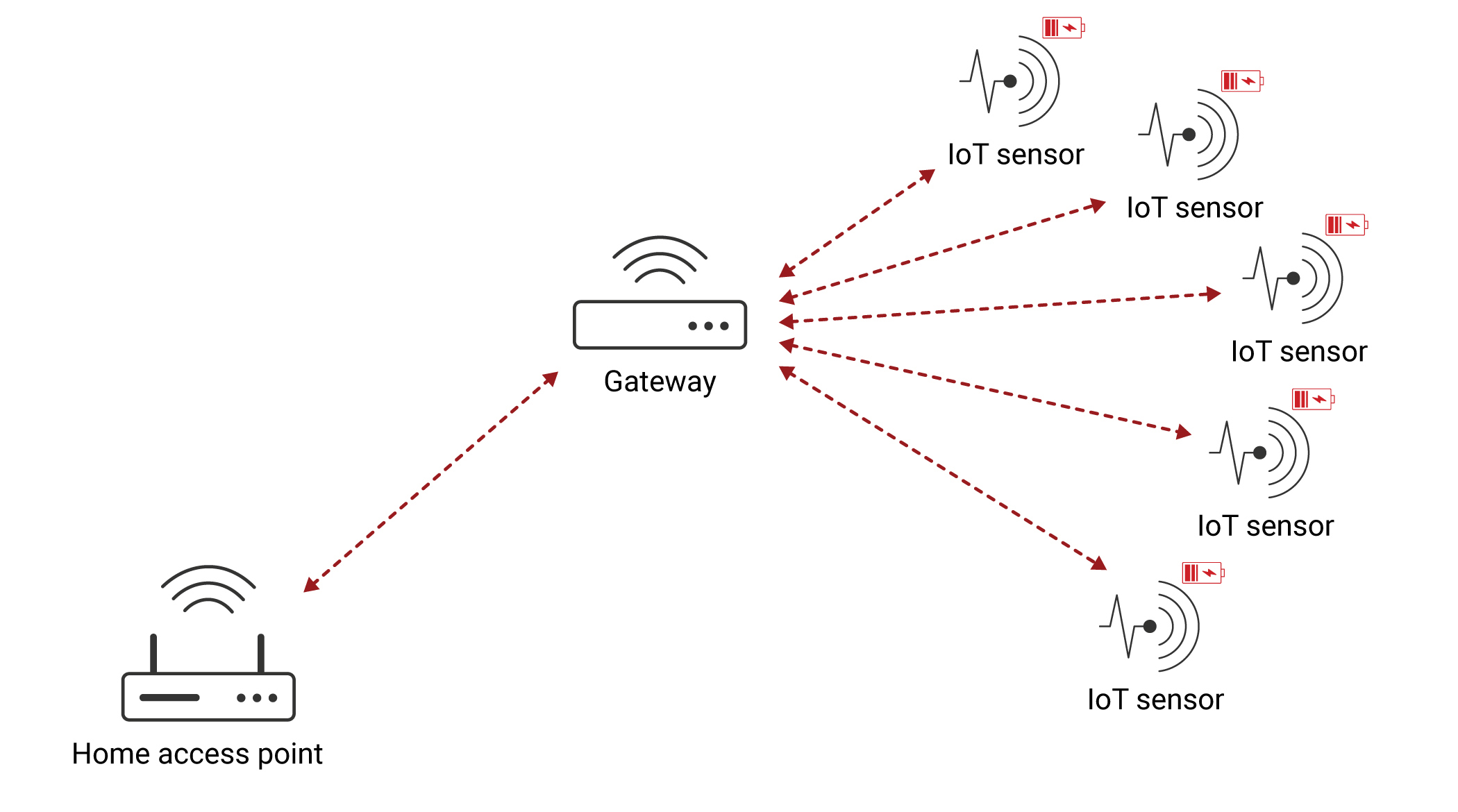SWRA733 March 2022 WL1807MOD , WL1837MOD
1 Introduction
Legacy WLAN implementations assume a single WLAN role operation (station, access point or any other WLAN role). Multi Role means that several WLAN roles (two or more) are operating concurrently, on the same or even different channels and/or bands.
A typical example for Multi Role can be a gateway device where one role is a WLAN station connected to home access point which provides the access to the internet, and the other role is a WLAN access point connected to one or more sensors scattered around the house. In such a system a user can access the gateway device to easily monitor and control each one of the sensors instead of accessing one by one.
 Figure 1-1 Multi Role Example
Figure 1-1 Multi Role ExampleOne approach is to implement concurrency using two or more completely separate radio systems (for example, one per each role). This fits the high-end, highest-performance, and most expensive solution.
On the other hand, for more cost-effective solutions – a single radio system (for example, radio and SW controller) manages transitions between multiple roles. With the single radio approach, the concurrency can be implemented using time-division sharing of system resources and thus achieve a more cost-effective solution. In such single radio solutions, the Multi Role implementation can be limited to operate all roles on the same physical channel (“Single-Channel” Multi Role) or allow the different roles to operate on different channels (“Multi-Channel” Multi Role).
This paper presents the multi-channel approach advantages over a single-channel approach of such multi-role solutions from an overall system performance point-of-view. This paper also discusses the challenges of achieving a cost-effective multi-role multi-channel solution with a single radio, and describes the different solutions that ensure a stable, high performing and reliable system as implemented in TI WL18xx™.